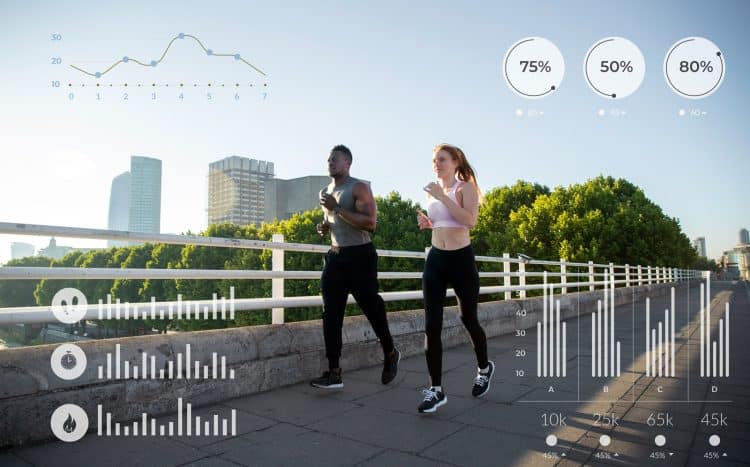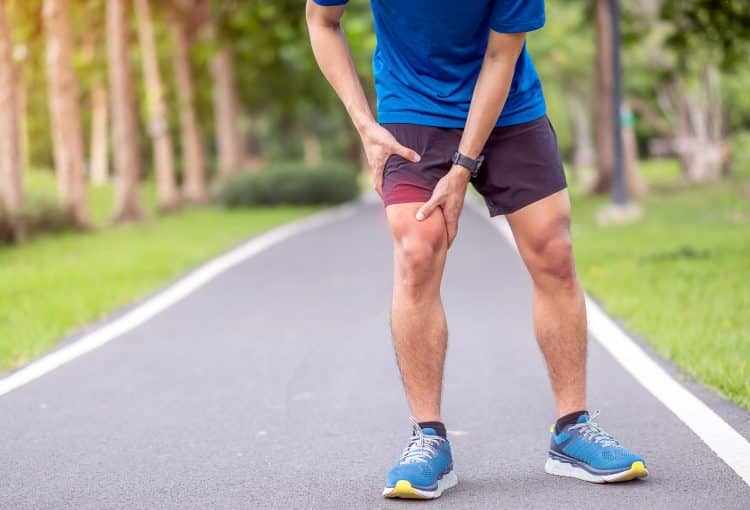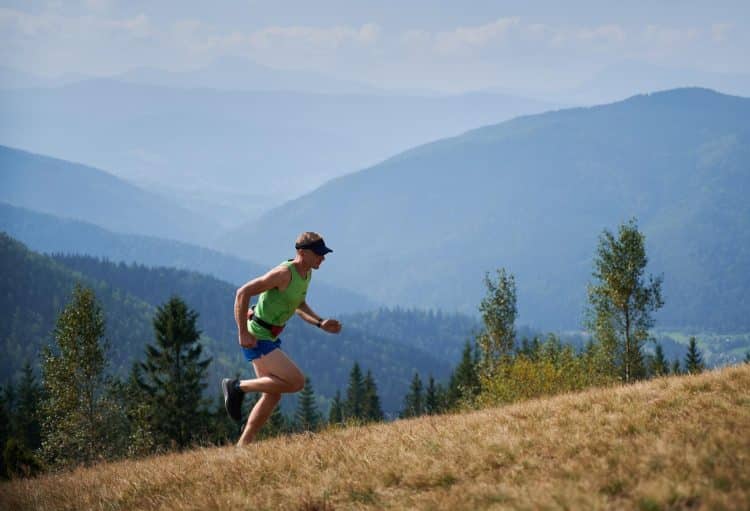According to figures from the Centers for Disease Control (CDC), 1 in 3 American adults are overweight, and 2 in 5 are obese (1). These statistics help explain why, as a veteran personal trainer with over 30 years of experience, many of my clients come to me for weight loss advice.
The reason for this weight gain is a hot-button topic. Still, possible causes include easy access to high-calorie junk food, decreased manual labor, increased sedentary leisure activities, mechanized transport, and labor-saving devices. In truth, it’s probably a combination of these and several other factors.
Regardless of the precise cause, weight gain is almost always the result of consuming too many kilocalories and being too physically inactive.
This creates an energy surplus, which is turned into and stored as body fat.
Given what we know about the mechanisms of weight gain, weight loss is best achieved by eating fewer kilocalories and being more physically active (2). This creates a kilocalorie deficit, forcing your body to burn stored fat for fuel. For most people, this means dieting and exercising. Check the 5 unbreakable rules for successful weight loss.
This raises the question: Which is walking or running better for weight loss? In this article, I will compare and contrast these two popular workouts so you can choose the one that’s right for you.
Level Up Your Fitness: Join our 💪 strong community in Fitness Volt Newsletter. Get daily inspiration, expert-backed workouts, nutrition tips, the latest in strength sports, and the support you need to reach your goals. Subscribe for free!
Walking Vs. Running: Energy Expenditure
The main purpose of exercise for weight loss is to increase your energy expenditure. While some forms of exercise burn more fat than others, it’s the total energy expenditure that matters most. The source of that energy (fat vs. carbohydrates) isn’t all that important.
Energy used during exercise is typically measured in kilocalories, although some people use the term calories instead. However, kilocalories are the correct unit of measure. It’s generally accepted that one pound of fat equals 3,500 kilocalories.
Therefore, if you burn 3,500 extra kilocalories, you should lose one pound. While this is something of an oversimplification, the math is close enough for most weight loss scenarios.
So, which burns more kilocalories – walking or running? Let’s dive in and find out!
Kilocalories Burned While Walking
Your energy expenditure while walking is determined by several factors, including speed, terrain, weight, age, and fitness level. However, a person weighing 180 pounds walking for 60 minutes at a reasonably brisk three miles per hour should burn around 300 kilocalories.
Three hundred kilocalories is not an insignificant amount of energy and will go a long way to creating the energy deficit you need to lose weight. In theory, walking an hour a day could lead to losing just over half a pound per week.
Estimate your kilocalorie expenditure while walking with this easy-to-use calculator.
Kilocalories Burned While Running
As I’m sure you already know, running is more demanding than walking. Running involves much more muscle engagement, and your heart and breathing rate are considerably higher. All that extra work means that running burns more kilocalories than walking.
Our same 180-pound person will burn roughly 940 kilocalories by running seven miles per hour for 60 minutes. In other words, running burns approximately three times as many kilocalories as walking.
Again, you can estimate your kilocalorie expenditure while running with this calculator.
Walking Vs. Running – And the Winner Is…
Running has the potential to lead to faster weight loss than walking, assuming the same frequency and duration for both activities. This conclusion is supported by research (3).
A 2013 study compared data from 50,000 people who had been either running or walking regularly for five years or more. Researchers found that while both types of exercise resulted in weight loss, those who ran generally lost more.
So, on the surface, running is better than walking. It burns more kilocalories and should lead to faster, more significant weight loss.
But before you lace up your sneakers and start pounding the pavement, we must stop and consider some of the other differences between walking and running. These differences will determine if running is the right workout for you or if walking will be more effective.
Walking Vs. Running:
Difficulty
The reason that running burns more kilocalories than walking is that it’s a more intense workout. Unless you are hiking up a steep mountain with a heavy pack on your back, your heart and breathing rate will invariably be higher during a run than a walk.
However, while the increased difficulty leads to a higher energy expenditure, it also means that running is physically more strenuous than walking. As such, it tends to be more tiring. This means that you may not be able to run as far as you can walk and may not be able to run as often.
As an athlete, I only ran 3-4 times per week. More than that left me feeling tired and sore. In contrast, I can walk every day and often walk several times a day. While walking burns fewer kilocalories than running, walking longer and more often could offset this drawback.
However, running is the clear winner if you want to burn the most kilocalories in the least amount of time. As such, running may help you lose weight faster.
Accessibility
Running is a bonafide workout. As such, you’ll need to put time aside to do it, dress in appropriate clothing, pick out a route or have access to a treadmill, and plan how far and long you want to run for.
In contrast, you can walk almost anywhere and anytime, and all you need is a pair of suitable shoes. As such, there are far fewer barriers to walking than running, which may make walking easier to fit into your day. In terms of convenience, walking is hard to beat.
Suitability for Beginners/Overweight
While running burns more kilocalories per minute than walking, it may be too intense for some beginners and overweight exercisers. Trying to run too far too soon is exhausting, and if you can only manage a few minutes, you won’t burn many kilocalories.
Level Up Your Fitness: Join our 💪 strong community in Fitness Volt Newsletter. Get daily inspiration, expert-backed workouts, nutrition tips, the latest in strength sports, and the support you need to reach your goals. Subscribe for free!
In contrast, beginners and overweight people should find walking much less stressful. Even unfit exercisers should be able to walk a reasonable distance, even if they need to do several short walks per day to burn enough kilocalories to lose weight.
Injury Risk
Running is a high-impact activity. That means both feet leave the floor at the same time. What goes up must come down, and your feet hit the floor with a lot of force. While the amount of impact varies according to your running style (forefoot vs. heel striking) and the running surface, it can amount to 2-5 times your body weight.
Needless to say, this puts tremendous stress on your feet, ankles, knees, hips, and lower back and could lead to injury. Over half of all runners have a chronic running-related injury, and overweight and deconditioned runners are especially at risk (4).
Walking is a much lower-impact activity and far less likely to result in injuries.
Potential for Consistency
Unless you are an elite marathoner, you probably won’t be able to run long distances every day. Running can be tiring, and you’ll need to incorporate rest days into your training schedule to avoid overtraining and burnout.
Beginners may find that 2-3 runs per week is their limit. Fewer weekly workouts will reduce your overall energy expenditure, potentially limiting weight loss.
In contrast, most people should have no problem walking every day of the week. I have walked 10,000 steps daily for over a year without adverse effects. I’m confident that running the same distance each day would have left me tired, sore, and possibly injured.
Enjoyment
Walking and running can be enjoyable activities, but not everyone likes them equally. If you enjoy running and can do it consistently and safely, it’s a great way to get fit and lose weight.
However, if you find running hard, uncomfortable, or otherwise unenjoyable, you have a readymade excuse for not doing it. In that case, you may find walking more enjoyable and more likely to do it consistently.
So, while it may seem that running is better for weight loss on paper, the real winner is the one you enjoy and want to do.
FAQ’s
Do you have a question regarding running vs. walking for weight loss? No problem, because I’ve got the answers you seek! Need more information? Drop me a line in the comments section below, and I’ll get back to you ASAP.
1. Which burns more kilocalories – walking or running?
While your precise energy expenditure depends on several factors, including your weight, age, gender, pace, and environment, you’ll generally burn three times as many kilocalories per minute running compared to walking.
However, your weekly average energy expenditure is what matters most, so consistency is also a critical consideration when choosing between walking and running for weight loss. If you only run 1-2 times per week, compared to walking daily, you’ll probably lose weight faster by sticking to walking.
2. How can I make walking better for weight loss?
There are several ways to burn more kilocalories when walking for faster weight loss. Effective strategies include:
- Walking uphill
- Walking off-road
- Wearing a weighted vest
- Increasing your speed
- Doing mixed speed intervals (aka Fartlek training)
- Doing bodyweight exercises during your walk
Basically, anything that forces you to work a little harder will increase your energy expenditure.
3. How many kilocalories does walking 10,000 steps burn?
Ten thousand steps is roughly equal to five miles of walking. The average person burns around 100 kilocalories per mile, so walking 10,000 steps at a moderate pace should use approximately 500 kilocalories.
However, the precise energy expenditure will depend on your weight, speed, and the terrain of your walk. I suggest using an activity tracker to determine more precisely how many kilocalories you use while walking.
4. Can I run every day?
While you can run every day, doing so increases your risk of chronic and acute injury. Running is a high-impact activity and puts a lot of stress on your muscles and joints. As such, most people should include rest days in their training schedules.
I encourage my clients to adopt a day-on/day-off running schedule. While they still train between runs, we avoid high-impact activities to ensure their joints and muscles have the time they need to recover. This approach helps keep injuries to a minimum.
5. Which is better for fitness – walking or running?
Running increases your heart and breathing rate more than walking. As such, it’s arguably the best option for improving cardiovascular fitness. However, that doesn’t mean walking won’t improve your fitness – it will. That’s especially true if you walk briskly and take in some hills.
However, running is more challenging and intense than walking, which produces better fitness adaptations in the heart, lungs, and circulatory system.
Walking Vs. Running: Closing Thoughts
Fitness experts love to argue over the merits of different exercises. They’ll compare things like muscle recruitment, energy expenditure, and other metrics to determine which is best. However, while there may seem to be a clear winner, the reality is that most exercise comparisons fail to account for one thing – YOU!
In most cases, the best exercise is the one that matches your needs and goals. It’s the one you can do consistently with the lowest risk of injury and the option you enjoy.
Consequently, while running burns more kilocalories per minute than walking, it may not be the best way to lose weight for some people.
Individuals who are relatively fit, not too overweight, and have no underlying health or musculoskeletal issues will probably get good results from running.
In contrast, beginners, overweight exercisers, older people, and those with lower body aches and pains may prefer to walk their way to fitness and weight loss.
Of course, assuming you can, there is no reason not to walk and run, alternating between them from one day to the next.
Ultimately, walking and running can help you lose weight, but only when paired with an appropriate diet. Also, remember there are many other types of cardio, such as cycling and swimming, all of which can help you lose weight and get fit. Neither walking nor running are compulsory!
References:
- Centers for Disease Control: Obesity Facts
- Strasser B, Spreitzer A, Haber P. Fat loss depends on energy deficit only, independently of the method for weight loss. Ann Nutr Metab. 2007;51(5):428-32. doi: 10.1159/000111162. Epub 2007 Nov 20. PMID: 18025815.
- WILLIAMS, PAUL T. Greater Weight Loss from Running than Walking during a 6.2-yr Prospective Follow-up. Medicine & Science in Sports & Exercise 45(4):p 706-713, April 2013. | DOI: 10.1249/MSS.0b013e31827b0d0a
- Musgjerd T, Anason J, Rutherford D, Kernozek TW. Effect of Increasing Running Cadence on Peak Impact Force in an Outdoor Environment. Int J Sports Phys Ther. 2021 Aug 1;16(4):1076-1083. doi: 10.26603/001c.25166. PMID: 34386286; PMCID: PMC8329321.
















